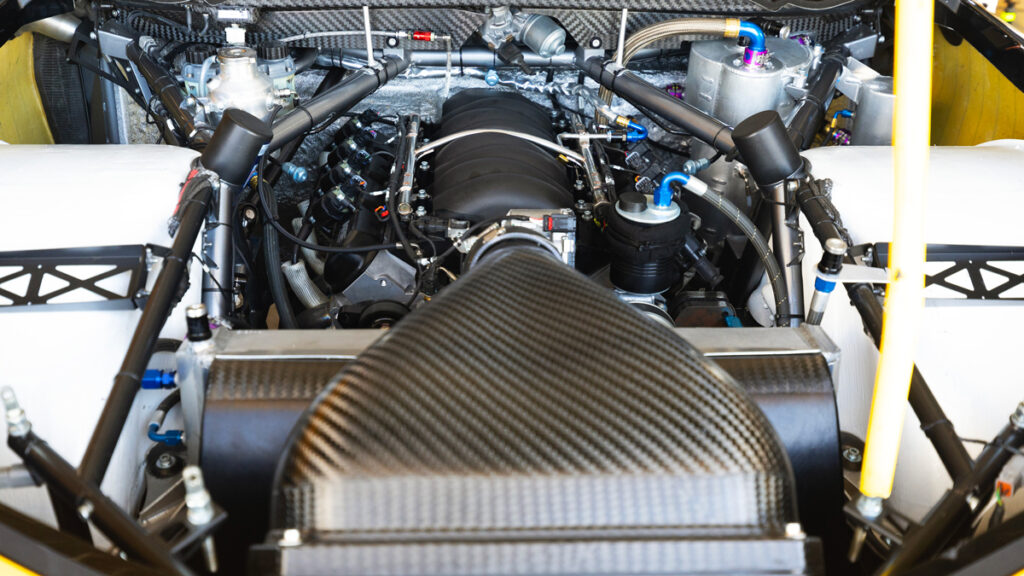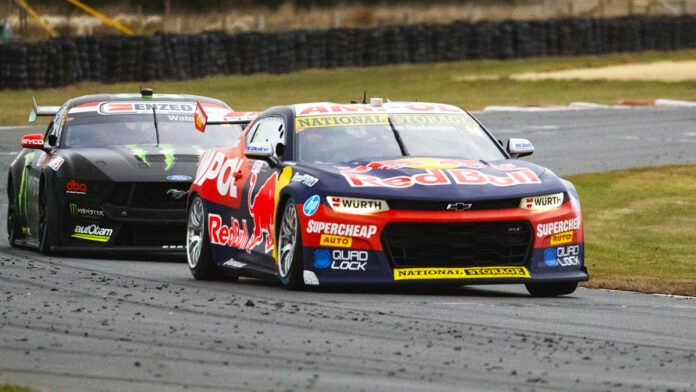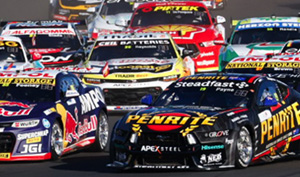PARITY has been the hottest word in Supercars since Albert Park, if not longer.
It is a complicated and controversial subject with multiple layers to consider, as V8 Sleuth explores here.
The crux of the issue
Supercars is a technical parity category, which shouldn’t be confused with sporting parity (i.e. Balance of Performance).
So, that Camaro drivers have dominated the opening four rounds of the season can’t be taken as absolute proof that there is a parity issue.
It all comes down to data, as Erebus Motorsport CEO Barry Ryan has pointed out.
“I know I have seen the Ford teams’ data and we have sat down together with them and compared notes,” he said. “We know that in the data there’s no difference.
“If people don’t believe the data, well why do we have the data? We may as well just have an old tacho.”
But that’s where the problem lies.
While it seems increasingly obvious that there is some level of disparity at play, Supercars’ current range of tools has struggled to detect performance differences between the Ford and Chevrolet motors.
Simply giving the Mustangs more horsepower would go against the principles of technical parity.
Toying with shift cuts and engine maps have been adopted as band-aid solutions, and the feedback appears to be positive on the latest Ford map trialled during practice in Tasmania, but more data points are much-needed and finally on the way.
V8 Sleuth understands Supercars has ordered two sets of torque sensors, which can provide real-time data. They mightn’t arrive in time for the Darwin Triple Crown next month, but hopefully ahead of the Townsville 500 in July, with one set fitted to a Camaro and the other to a Mustang.
And perhaps most importantly, access to a transient dyno will soon be available to provide a detailed comparison of the two units as a whole.
Supercars personnel inspected the facility at DS International’s Melbourne headquarters on Monday, and it’s thought the dyno should be ready for testing in a matter of weeks once minor modifications have been made.

What Ford teams think the problem is
Supercars team owner Ryan Walkinshaw spelt this out pretty clearly via social media.
“Ford had to detune the engines to help GM,” he wrote.
“This has caused stuttering at a certain rev range, also downshift issues and torque delivery issues on acceleration which smashes our tyre life.
“So far the combined efforts of Ford and Supercars to fix it have not worked well.”
Both Walkinshaw and Dick Johnson Racing CEO David Noble have actually credited Supercars for its efforts to investigate the problem.
“We’re appreciative of what’s been put in place so far, and certainly between HPE (Herrod Performance Engines) and us as the homologation team and Supercars, there’s good dialogue to continue to push to get those levels to what we need to,” Noble told Parked Up Plus.
“We’re not necessarily disappointed in how Supercars are going about it but we’re going to continue to push to get better parity… once we get in a position where we can compete to win, we’ll be happy. At the moment, we can’t.”
Cam Waters showed at Symmons Plains that the outright one-lap pace is there in the Mustang but indicated that driveability and repeatability are constraints.
“I can only speak for my car and what I do inside my car, and I guess my team cars. To extract a lap out of it, you’re sliding and you’re using all of the tyre,” he told the Castrol Motorsport News Podcast.
“Sometimes when you put a green tyre on a car in quali it masks some of your problems and you can get away with having little issues.
“In a race distance, you can’t do that. You have to drive the car back, or if you do drive faster you know you’re going to blow the tyre off it and that’s essentially what happened this weekend.”
Technical parity versus sporting parity
Rightly or wrongly, a common counterpoint is that Ford teams and drivers simply haven’t done as good a job as Triple Eight and especially Erebus.
There have been various errors for Dick Johnson Racing, poor reliability for Walkinshaw Andretti United’s Nick Percat, and plenty of ups and downs for Grove Racing – all of which have perhaps exacerbated the situation.
Championship leader Brodie Kostecki certainly leaned on this when asked about parity on Sunday night.
“Cam was P1 in all the straight sectors I’m pretty sure and he ran into another Ford in every qualifying session, so I don’t really know how they can complain about the parity when they keep running into each other,” he said.
The biggest takeaway
Whatever the transient dyno and torque sensors find, the most important lesson for Supercars is that it forever improves its parity processes.
It has already done so on the aero front, thanks to the purchase of new flat patch scales from Europe and a more transparent process which left all parties satisfied following the Temora test late in the pre-season.
Now that the universal 5.0-litre era is no more, having access to more and better data for engine comparison work will be critical to keep hold of.
It’s important Supercars doesn’t face this sort of drama again – whether it be when a new manufacturer joins or the Camaro is replaced in 2026 or when Gen4 comes in – so the formulating of a more confidence-inducing parity process is a must.




